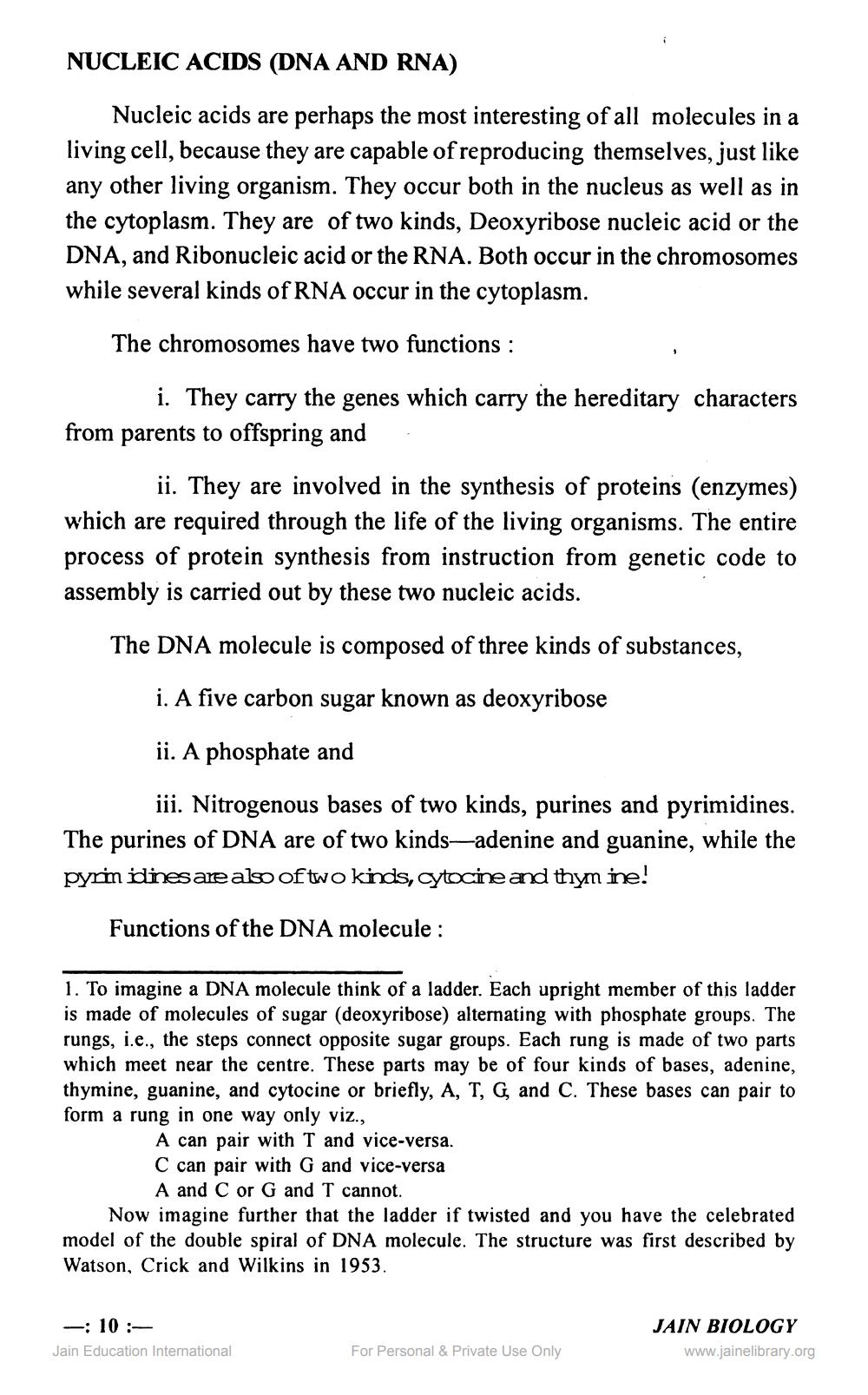________________
NUCLEIC ACIDS (DNA AND RNA)
Nucleic acids are perhaps the most interesting of all molecules in a living cell, because they are capable of reproducing themselves, just like any other living organism. They occur both in the nucleus as well as in the cytoplasm. They are of two kinds, Deoxyribose nucleic acid or the DNA, and Ribonucleic acid or the RNA. Both occur in the chromosomes while several kinds of RNA occur in the cytoplasm.
The chromosomes have two functions :
i. They carry the genes which carry the hereditary characters from parents to offspring and
ii. They are involved in the synthesis of proteins (enzymes) which are required through the life of the living organisms. The entire process of protein synthesis from instruction from genetic code to assembly is carried out by these two nucleic acids.
The DNA molecule is composed of three kinds of substances,
i. A five carbon sugar known as deoxyribose
ii. A phosphate and
iii. Nitrogenous bases of two kinds, purines and pyrimidines. The purines of DNA are of two kindsadenine and guanine, while the pyrimidines are also of two kinds, cytocine and thym ine!
Functions of the DNA molecule :
1. To imagine a DNA molecule think of a ladder. Each upright member of this ladder is made of molecules of sugar (deoxyribose) alternating with phosphate groups. The rungs, i.e., the steps connect opposite sugar groups. Each rung is made of two parts which meet near the centre. These parts may be of four kinds of bases, adenine, thymine, guanine, and cytocine or briefly, A, T, G, and C. These bases can pair to form a rung in one way only viz.,
A can pair with T and vice-versa. C can pair with G and vice-versa
A and C or G and T cannot. Now imagine further that the ladder if twisted and you have the celebrated model of the double spiral of DNA molecule. The structure was first described by Watson, Crick and Wilkins in 1953.
- 10 : Jain Education International
JAIN BIOLOGY
www.jainelibrary.org
For Personal & Private Use Only




